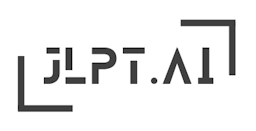

N4CommonVerbs
na-sa-ru
A humble form of the verb する (suru), used to show respect when referring to someone else's actions. It is commonly used in business settings and formal situations.
ます-Form Verb + なさる
お越しになる (to come)
ます-Form Verb (Remove ます) + なさる
食べる (to eat) -> なさる -> お食べになる (to eat)
お父様がご来店されました。 (Unknown)
Your father has come to the store.
おとうさまがごらいてんされました。
Otousama ga goraiten saremashita.
ご興味がありましたら、お問い合わせください。 (Unknown)
If you are interested, please inquire.
ごきょうみがありましたら、おといあわせください。
Gokyoumi ga arimashitara, otoiawase kudasai.
お忙しい中、お時間を割いていただきありがとうございます。 (Unknown)
Thank you for taking time out of your busy schedule.
おいそがしいなか、おじかんをわいていただきありがとうございます。
Oisogashii naka, ojikan wo haite itadaki arigatou gozaimasu.
昨日は大変お世話になりました。 (Unknown)
Thank you for your help yesterday.
きのうはたいへんおせわになりました。
Kinou wa taihen osewa ni narimashita.
お忙しい中、私たちの質問にお答えいただきありがとうございます。 (Unknown)
Thank you for answering our questions in your busy schedule.
おいそがしいなか、わたしたちのしつもんにおこたえいただきありがとうございます。
Oisogashii naka, watashitachi no shitsumon ni okotae itadaki arigatou gozaimasu.
Which sentence is the correct usage of なさる?